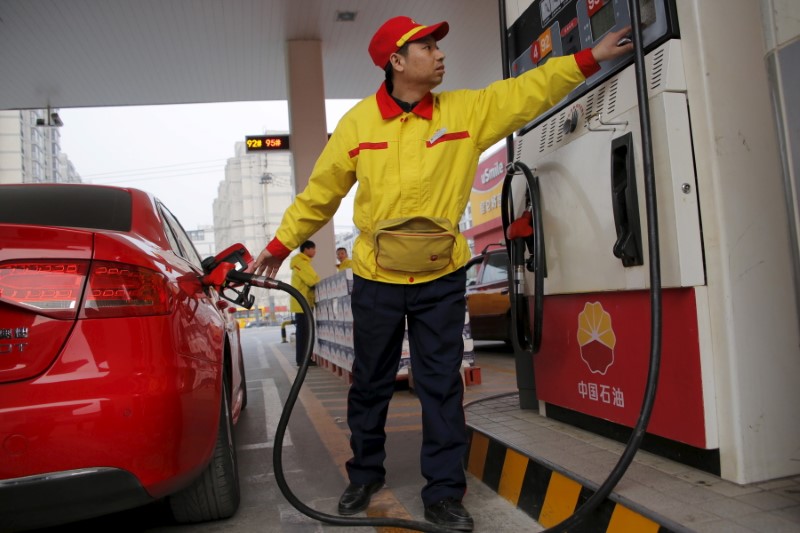 © Reuters. A gas station attendant pumps fuel into a customer’s car at PetroChina’s petrol station in Beijing
© Reuters. A gas station attendant pumps fuel into a customer’s car at PetroChina’s petrol station in BeijingBy Henning Gloystein
SINGAPORE (Reuters) – Oil prices hit their highest levels since 2014 on Wednesday due to ongoing production cuts led by OPEC as well as healthy demand, although analysts cautioned that markets may be overheating.
A broad global market rally, including stocks, has also been fuelling investment into crude oil futures. [MKTS/GLOB]
U.S. West Texas Intermediate (WTI) crude futures () were at $63.40 a barrel at 0100 GMT – 44 cents, or 0.7 percent, above their last settlement. They marked a December-2014 high of $63.53 a barrel in early trading.
Brent crude futures () were at $69.15 a barrel, 33 cents, or 0.5 percent, above their last close. Brent touched $69.29 in late Tuesday trading, its strongest since an intra-day spike in May 2015 and, before that, in December 2014.
“The extension of the OPEC agreement … and declining inventories are all helping to drive the price higher,” said William O’Loughlin, investment analyst at Australia’s Rivkin Securities.
In an effort to prop up prices, the Organization of the Petroleum Exporting Countries (OPEC) together with Russia and a group of other producers last November extended an output cut deal that was due to expire in March this year to cover all of 2018.
The cuts, which have mostly targeted Europe and North America, was aimed at reducing a global supply overhang that had dogged oil markets since 2014.
The American Petroleum Institute said late on Tuesday that crude inventories fell by 11.2 million barrels in the week to Jan. 5, to 416.6 million barrels.
Official U.S. Energy Information Administration data is due at 1530 GMT on Wednesday.
OVERHEATED?
Amid the general bull-run, which has pushed up crude prices by more than 13 percent since early December, there are indicators of an overheated market.
In the United States, crude oil production
In Asia, the world’s biggest oil consumer region, refiners are suffering from high prices and ample fuel supplies.
“One area of concern, particularly in Asia, is that of (low) refining margins … This drop in margins could reduce Asian refiners’ demand for incremental crude in the near term and weigh on global prices,” said Sukrit Vijayakar, director of energy consultancy Trifecta.
Average Singapore refinery margins
Asian oil prices are higher than in the rest of the world.
While Brent and WTI are still below $70 per barrel, the average price for Asian crude oil grades has already risen above that level, to $70.62 per barrel, Thomson Reuters Eikon data showed.
Source: Investing.com





























